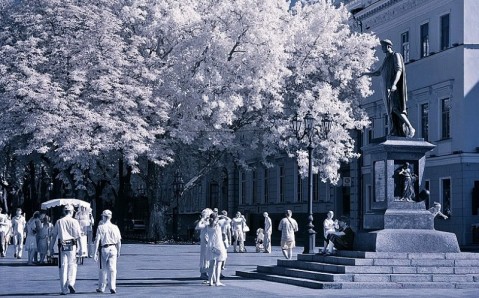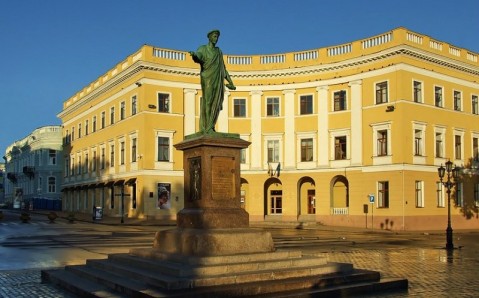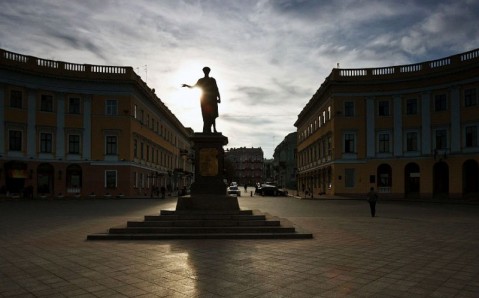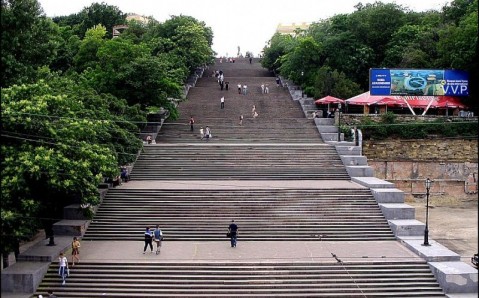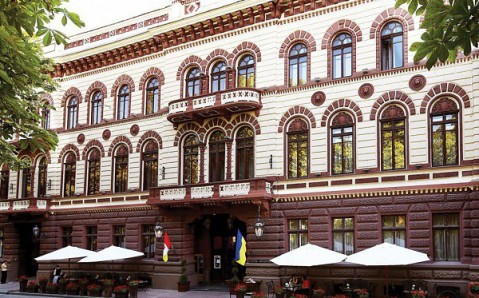Monument to Duke de Richelieu
Duke de Richelieu was an eminent personality who played significant role in Odesa's formation and development, and his statue that rises atop the legendary Potemkin Stairs is one of the Southern Palmyra's most famous symbols.
The list of de Richelieu's great services to this southern town, which he called the best pearl in the Russia's crown, is endless. Being governor of Odesa and then its governor-general, the Duke became Odesa's true benefactor. Local residents highly respected him and called him 'our duke'. It was de Richelieu who assured the tax burden removal from the Southern Palmyra and, therefore, young town's prosperity and active development. Under his rule it turned into large trade port. Odesa owes rush development of industry, agriculture, science and culture also to Duke de Richelieu.
Thus, it's no wonder that, when his successor - the then governor of Odesa Count Lanzheron - heard about duke's death, he addressed town's residents with a call to raise money for creating a monument in honor of the Southern Palmyra's main benefactor. Unprecedented for those times civic impulse spread over town: not only high-ranking officials, rich merchants and aristocrats responded to the call, but mere citizens - plant workers and stevedores.
Prominent Russian sculptor - the author of the famous Monument to Minin and Pozharsky in Moscow - was charged with monument's design. He decided to depict de Richelieu in full-length, dressed in Roman toga and with a scroll in hand. Several coins, dated to the times of French Kings Luis XVI and Luis XVIII, Russian Regents Catherine II and Paul I, and the medallion with duke's portrayal, casted after his death in Paris, were laid in monument's foundation. Bronze sculpture of de Richelieu was placed on the tetrahedral granitic pedestal, whose three sides are adorned with original bas-reliefs. They depicted female figures that embodied justice, trade and agriculture. In this way, in 1828, the monument to commemorate Duke de Richelieu appeared in Odesa; furthermore, it became the first monument installed in Southern Palmyra.
A quarter of a century later, the sculpture acquired one more detail. In the year 1854, during the Crimean War, a cannonball exploded on the square near the monument and its splinter damaged the pedestal. Soon afterwards a sort of cast-iron patch was placed on the damaged area. A cannonball was fixed into it to commemorate those events.
Today the monument to Duke de Richelieu is not only Odesa's trademark, but a sort of talisman for its residents, who ascribe truly magical properties to the bronze statue. Thus, local pupils and students always come to duke before exams - he is considered to bring luck. It is also said that if you touch the sack of coins depicted on the bas-relief and symbolizing trade, you will become successful and rich.
Almost two centuries have passed, and the bronze Duke de Richelieu still meets and sees off ships that come to Odesa Sea Port, and continues to gladden Southern Palmyra's locals and its numerous guests.

 Southern
Southern

